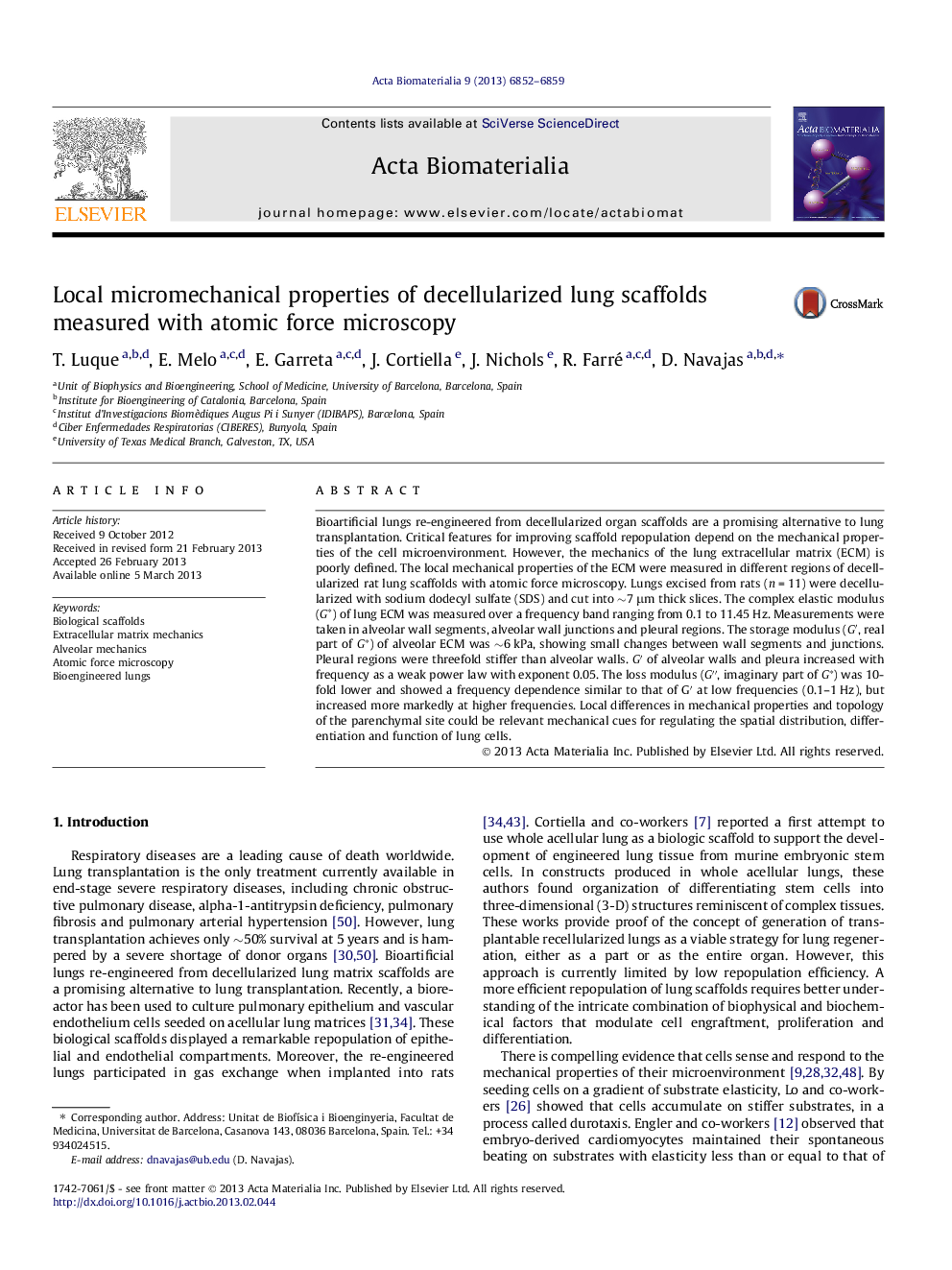| Article ID | Journal | Published Year | Pages | File Type |
|---|---|---|---|---|
| 10159539 | Acta Biomaterialia | 2013 | 8 Pages |
Abstract
Bioartificial lungs re-engineered from decellularized organ scaffolds are a promising alternative to lung transplantation. Critical features for improving scaffold repopulation depend on the mechanical properties of the cell microenvironment. However, the mechanics of the lung extracellular matrix (ECM) is poorly defined. The local mechanical properties of the ECM were measured in different regions of decellularized rat lung scaffolds with atomic force microscopy. Lungs excised from rats (n = 11) were decellularized with sodium dodecyl sulfate (SDS) and cut into â¼7 μm thick slices. The complex elastic modulus (Gâ) of lung ECM was measured over a frequency band ranging from 0.1 to 11.45 Hz. Measurements were taken in alveolar wall segments, alveolar wall junctions and pleural regions. The storage modulus (Gâ², real part of Gâ) of alveolar ECM was â¼6 kPa, showing small changes between wall segments and junctions. Pleural regions were threefold stiffer than alveolar walls. Gâ² of alveolar walls and pleura increased with frequency as a weak power law with exponent 0.05. The loss modulus (Gâ³, imaginary part of Gâ) was 10-fold lower and showed a frequency dependence similar to that of Gâ² at low frequencies (0.1-1 Hz), but increased more markedly at higher frequencies. Local differences in mechanical properties and topology of the parenchymal site could be relevant mechanical cues for regulating the spatial distribution, differentiation and function of lung cells.
Related Topics
Physical Sciences and Engineering
Chemical Engineering
Bioengineering
Authors
T. Luque, E. Melo, E. Garreta, J. Cortiella, J. Nichols, R. Farré, D. Navajas,
